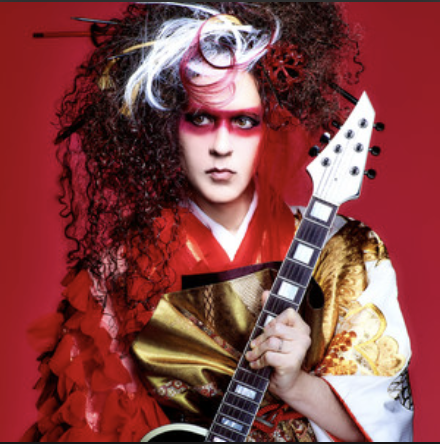As far as metal guitarists (and guitarists in general) go, Marty Friedman is an absolute legend. He first rose to prominence alongside the legendary Jason Becker with the shred metal band Cacophony. He went on to become a global superstar and an immortal legend after he joined Megadeth and worked on some iconic metal albums like “Rust in Peace” and “Countdown to Extinction”.
Marty Friedman departed Megadeth in the early 2000s and has lived in Japan ever since. He was drawn to the incredibly unique Japanese culture where (in his own words), “taboos are off”. Let’s not forget, Japan is the country that gave us Death Panda and Babymetal. Over the years, Marty Friedman has consistently expressed his love for Japanese culture and music in numerous interviews (and in his music). “Tokyo Jukebox 3” isn’t just his latest album, it’s another love letter by Marty Friedman to Japanese culture and music. Let’s find out more about it.
Throughout “Tokyo Jukebox 3” (except two tracks), Marty Friedman regales us with his interpretations of J-Pop. Even though it is mainly an album of cover tunes, Marty Friedman’s vision and unique sense of musicality make the covers sound different and brilliant (similar to how Jimi Hendrix took Bob Dylan’s “All Along The Watchtower” and made it his own).
Aside from the covers, “Tokyo Jukebox 3” features two fantastic original tracks, ‘The Better World‘ (with J-Pop singer Alfakyun) and the final track of the album, the ‘Japan Heritage Theme Song’.
Most non J-Pop fans will most likely be unfamiliar with the original versions of the tracks that Marty Friedman has reimagined. That fact has two advantages, first, it will allow them to listen to the songs without constantly drawing comparisons with the originals. Second, it might even serve as a gateway for many Marty Friedman fans into the wonderful world of Japanese music.
The best song on the album is definitely the opener “Makenaide”, which is a reimagined and “metallized” version of the hit 90s J Pop single by Zard. The track sounds wonderfully anthemic. The soaring, uplifting melodies feature the signature bends and vibrato of Marty Friedman.
There is also an extremely heavy djenty section in the middle which adds more flavours to this already delicious track. The amalgamation of Western classical, heavy metal and Japanese music is stunning. The music video has a great surprise for Cacophony fans at the end. Throughout the album, Marty Friedman’s impeccable note selection and song arranging abilities shine nice and bright.
Is it the best album that Marty Friedman has ever worked on? Does it shred like “Dragon’s Kiss”? Does it thrash like Megadeth? The answer to all those questions is a resounding who cares? You can always listen to songs like “Forbidden City” and “Lucretia” if you want to enjoy some of the old flavours of Marty Friedman’s work. “Tokyo Jukebox 3” is new, and it’s a fantastic work of music by Marty Friedman that is extremely enjoyable and fun to listen to. Never give up on playing it again and again.
Verdict: Jukebox Hero.
Do Follow:
Instagram: https://www.instagram.com/martyfriedman








